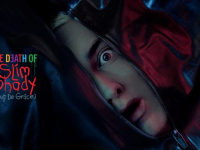
In the second cinematic take on the 1966 Thomas P Cullinan novel, Sofia Coppola turns her impressive directorial skills to the feminist psycho-sexual drama, but how will she fare against the novel and previous film adaptation?
Having already been attempted previously by director Don Siegel, with Clint Eastwood playing the lead role – now filled by Colin Farrell – this is not the first attempt at an already tricky story to handle. The premise of the tale is that at the height of the American Civil War, a badly injured Union soldier/deserter Corporal James Burnley (Colin Farrell) finds himself behind enemy lines and throws himself on the mercy of a Southern girls school run by Martha Farnsworth (Nicole Kidman). Of course, the presence of the semi-clad Irish soldier of fortune gives the women a serious case of the “vapours” and they all clamour to “tend” to him.
In contrast to Siegel’s version, the slaves that feature in the novel have already fled the war, along with most of the girls from the school. This lends a more claustrophobic air to the film and allows for more psychological tension to build throughout. Being directed by Sofia Coppola has also changed the play of the game dramatically as well. It has definitely afforded a more feminine take on the film, as opposed to Siegel’s arguably more sexist take that was loaded with flashbacks of sexualised imagery. Coppola’s interpretation is more subtle and nuanced, loaded with crackling chemistry and tension throughout.
As our soldier of fortune, Burnley is brought to the school by the precocious Alicia (Elle Fanning), and it is clear that his skill set falls more in the realms of charm and manipulation than any actual military area. He is nursed back to health by the two matriarchs of the house, Martha Farnsworth and Miss Morrow (Kirsten Dunst) and soon takes up duty in the school by fixing things, gardening and performing general menial tasks that can be done whilst working up a sweat, shirtless and in plain sight of the isolated women of the piece. As the war begins to encroach upon the school and catch up to the Corporal, it’s hugely symbolic of the battle that will begin to appear not only on the doorstep of the school, but within its doors, on the stairs and of course, in the bedroom.
The way the film has been shot is extremely artful. There are definitely moments where Coppola has made a clear choice to slice through the heavy metaphors and suggestive themes of the films predecessor and go straight for the more visceral  jugular. The tropes of the Southern dramas are still here: necklaces being ripped from a young female neck, dinners and dances fit for any grand plantation and even a dramatic staircase view; granted someone is tumbling down it at the time but a trope is a trope.
jugular. The tropes of the Southern dramas are still here: necklaces being ripped from a young female neck, dinners and dances fit for any grand plantation and even a dramatic staircase view; granted someone is tumbling down it at the time but a trope is a trope.
The film hasn’t been without its share of controversy surrounding its direction and casting, however. Coppola was accused of whitewashing by casting Kirsten Dunst in the role of a mixed-race character from the novel. Coppola did however address the issue by stating she made the changes “not [to] brush over such an important topic in a light way,” and that “young girls watch my films and this was not the depiction of an African American character I would want to show them.”
The intimacy and menace of the film is aided massively by the pedigree of the stars involved. As ever, Nicole Kidman shines in her role, loaded with menace, while considered poise and maturity hovers over the other characters. Colin Farrell deftly handles his role of a man used to getting his own way, who then finds himself far, far out of his depth as he struggles to regain control. Dunst and Fanning both play against each other like the East and West winds, rarely conflicting with one another but creating a storm between them.
Overall, the film is extremely enjoyable. With nods to film noir and even black comedy throughout the tempestuous drama it may be slow to build, but the storm is nigh on perfect.

Author: Steve, Southgate store





